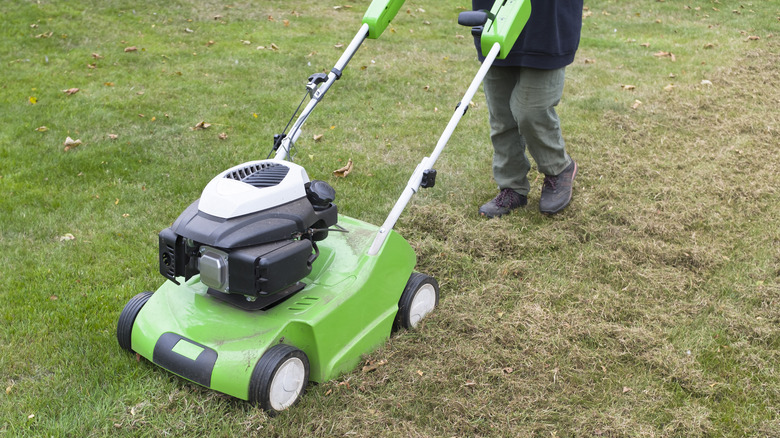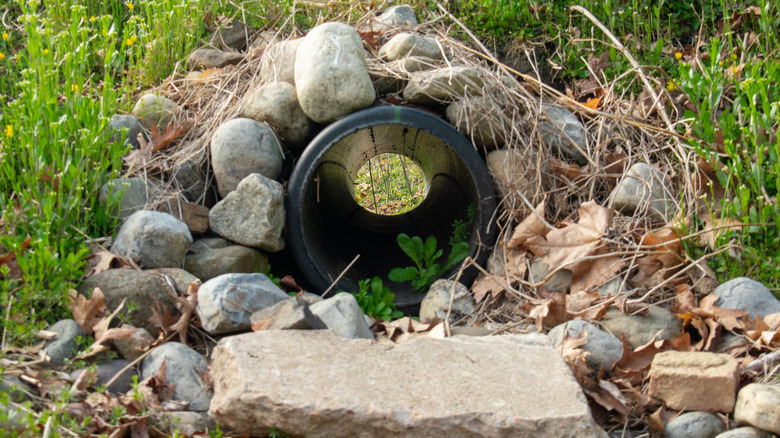After it has rained, it’s normal for your lawn to be soft and wet, but standing water is problematic. If your yard has water pooling instead of saturating into the soil, you must determine the right way to fix it. In some cases, it’s easy to use a dethatching tool to remove some of the built-up material on the soil, which may be preventing water from moving freely. This tool, powered or manual, is a quick fix for some areas. Other times, there’s more work involved to encourage water to flow freely into the soil or away from the home.
You’ll want to address this problem since standing water can lead to numerous issues, including attracting mosquitoes and rodents and encouraging mold and algae growth, both of which are not good for the lawn’s health. After the next time it rains, take a closer look at your yard. If there’s a pool of water, follow these tips to fix a waterlogged lawn.
How dethatching your yard works

Dethatching removes the excess thatch, which is compacted dead grass and other debris that sits on top of the soil and is woven into the grass. Dethatching pulls up the excess material, allowing more air, nutrients, and water to penetrate the soil. If you dig up a small section of the grass and there’s more than ½ an inch of thatch, you’ll likely need to use this method.
Using a manual dethatching rake to pull up the material is one way to fix this. While this method takes a bit of work, it is the more affordable option. The curved rake blades pull up the material as you move it across the surface, allowing you to scoop up the gunk. For small areas, this is a good option. However, a corded dethatcher could help reduce this method’s manual work because of its spinning tines, which do most of the work for you. If you have larger areas that need treatment, consider a power rake, which may be available at a local tool rental company. It works much like a lawn mower, and the steel tines pull up the material. Going over the area a few times should encourage better water flow.
When dethatching isn’t enough

If you dethatch the yard and walk on the surface after rain and it still feels spongy, the problem may be more significant. One reason for this is poor drainage, especially if your lawn is made up of heavy clay-based soil. The solution here is to mix more organic matter into the soil, like compost or organic mulches. This can help to amend the soil over time. However, some lawns need to be dug up entirely and started from scratch.
If you have standing water in specific areas, that could be because of a divot or drop in the grass, allowing more ponding to occur. Low spots are an issue because they will consistently hold water. Here, you’ll likely need to install a French drain or another draining system, especially if the problem is near your home. You may also want to hire a professional to grade your yard to encourage water to flow away from your property.



